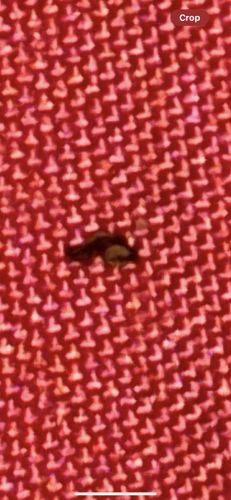Flea
Scientific Name: Ctenocephalides felis (cat flea, most common species found on domestic animals and humans)
Order & Family: Order: Siphonaptera, Family: Pulicidae (common fleas, though other families exist)
Size: Typically 1-4 mm (0.04-0.16 inches) in length.

Natural Habitat
Fleas are found globally, thriving in warm and humid environments. They inhabit the fur or feathers of various warm-blooded animals such as mammals (dogs, cats, rodents, humans) and birds. Off-host, their eggs, larvae, and pupae can be found in carpets, bedding, cracks in flooring, and pet resting areas.
Diet & Feeding
Adult fleas feed exclusively on the blood of their animal hosts. Larvae feed on organic detritus, including skin flakes, dander, and particularly the feces of adult fleas, which contain undigested blood.
Behavior Patterns
Fleas are ectoparasites, meaning they live on the outside of their hosts. They are known for their ability to jump impressive distances relative to their size, using their strong legs. Eggs are laid on the host but often fall off into the surrounding environment (carpets, bedding, pet resting areas). Larvae feed on organic debris, including adult flea feces, before pupating. The pupa can remain dormant for extended periods, emerging as an adult when vibrations or carbon dioxide indicate a potential host is near. They breed rapidly, especially in warm, humid conditions.
Risks & Benefits
Fleas are primarily a pest. They can cause intense itching, skin irritation, and allergic reactions (flea allergy dermatitis) in pets and humans. They are also vectors for various diseases, including tapeworms (Dipylidium caninum) in pets and the bubonic plague (via Yersinia pestis bacteria) in humans, though the latter is rare in developed countries today. They offer no direct benefits to humans or the ecosystem, other than serving as a food source for some predatory insects or mites.
Identified on: 8/29/2025